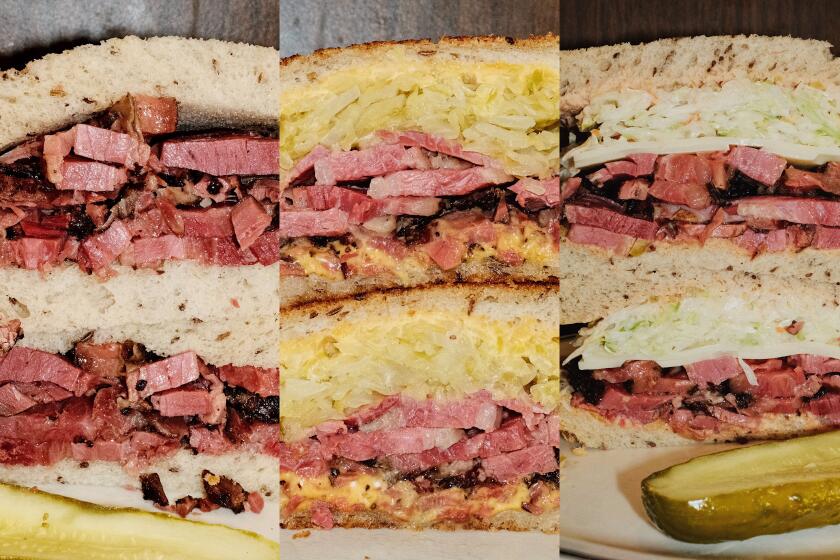Slaw and order: Chefs police food
The pineapples were fragrant, but not overly so. The mangoes were perfect for salsa: ripe yet still firm. And the cilantro -- wait a sec. Where was the cilantro?
Ciudad executive chef Jeremy Tummel was nosing his way through a tower of produce boxes one recent morning in the downtown Los Angeles restaurant when he realized that he was missing a case of cilantro. A crate of avocados was also MIA.
Simple misunderstanding, as it turned out. The boxes were still on the delivery truck. But Tummel wouldnât sign any invoices until the rest of the shipment had been dropped at his feet. He crouched down, grabbed a bunch of cilantro, breathed in and inspected the label: locally grown. Satisfied, he reached for his pen.
This is shaping up to be the summer of the food police, and chefs, including Tummel, have been deputized to be the last line of defense between diners and a bad batch of salsa.
So far this season, suspicions have been cast on tomatoes, cilantro, Mexican basil, and jalapeno and serrano peppers as the government tried to track down the source of a salmonella outbreak that has sickened more than 1,300 people. Last week, the government said that only jalapeño peppers grown in Mexico are implicated, and advised restaurants and grocery stores to know where their produce is coming from.
Chefs have always kept a close eye on the produce, meat and seafood that comes into their kitchens, and salmonella warnings do occur on occasion. But the back-to-back-to-back nature of this seasonâs scares have forced chefs to adopt a new level of vigilance.
As a result, Tummelâs duties these days include Googling for food news, checking the Food and Drug Administration website and keeping tabs on the origin of produce that comes in the restaurant kitchenâs back door and goes onto dinersâ plates. And he has to convey all this information to the rest of the staff. Thatâs just a reality when it comes to serving an increasingly anxious clientele who wonât hesitate to buttonhole the servers about where the heirloom tomatoes in the salad came from.
The produce items that had been suspected by the FDA are widely used in restaurants, particularly those serving Mexican food and salsa. But many Los Angeles restaurants and fast-food chains said they had no plans to change their menus -- either because their salsas were cooked, eliminating salmonella concerns, or because the movement toward locally grown produce gives chefs -- and their customers -- peace of mind.
âI can tell you exactly, precisely where all my food is from -- I have spreadsheets,â said chef Akasha Richmond of Akasha Restaurant in Culver City, which specializes in sustainable and organic foods.
She says she doesnât hesitate to ask for lab reports and test results proving that the produce passed health and safety standards, that refrigeration needs were properly met, that safe fertilizer was used during growing and so on.
If the policing of ingredients used by restaurant kitchens seems like a system that ultimately depends on more than a dollop of faith, it is.
But Los Angelesâ food community is tightly knit. Its farmers and purveyors who sell to fine-dining establishments have a vested interest in proving themselves a reliable source of safe, fresh, locally grown fruits and vegetables.
Keeping on top of breaking food news can seem like a second job. Tummel has some help in his sleuthing. A steward on staff bird-dogs produce and other food shipments. Ciudadâs corporate office tracks food news as a matter of course and immediately alerts Tummel and staff to developments.
But âit doesnât really matter what anyone else is âalsoâ doing,â Tummel said. âItâs my responsibility.â
--
More to Read
Eat your way across L.A.
Get our weekly Tasting Notes newsletter for reviews, news and more.
You may occasionally receive promotional content from the Los Angeles Times.











